PATG5102NB, Turbo II Air Hydraulic Pump, Hand/Foot 3-way Valve, 1,64 l/min Oil Flow at 7 bar
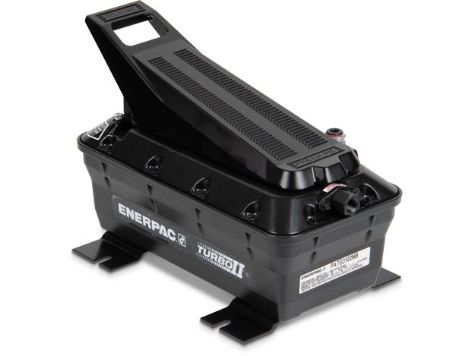
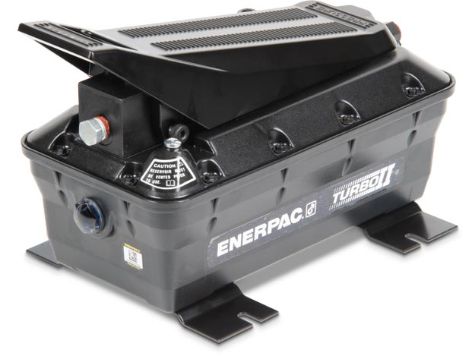
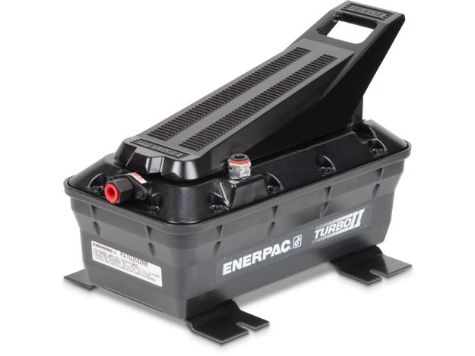
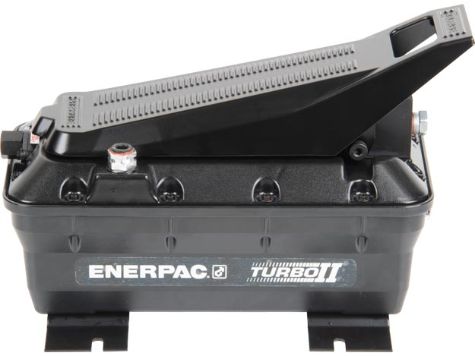
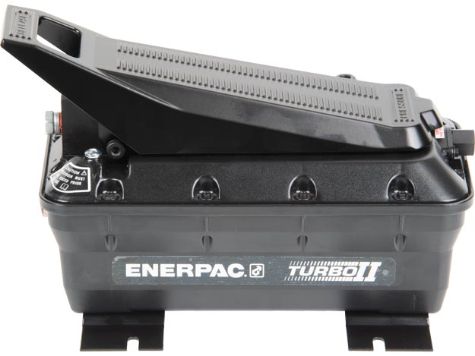
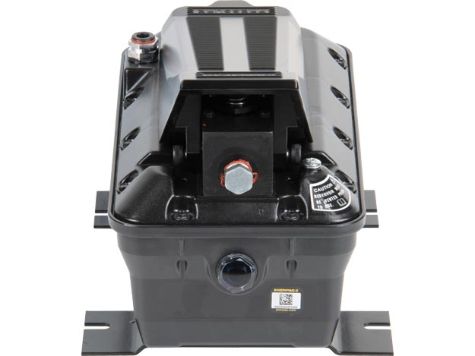
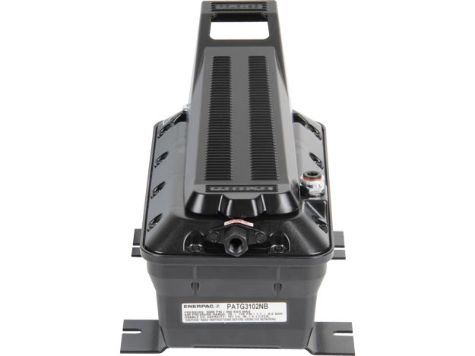
PATG5102NB, Turbo II Air Hydraulic Pump, Hand/Foot 3-way Valve, 1,64 l/min Oil Flow at 7 bar
Enerpac Turbo II Air Over Hydraulic Pumps generate the hydraulic pressure you need using the air pressure you have available. The Air Saver Piston reduces air consumption, and the pump can start at low pressures from 50-125 psi.
Turbo II Air-Hydraulic Pumps suit medium or lower cycle applications. They provide all the power and speed needed for simple clamping circuits and single acting tools. At only 75 dBA, the Turbo II Series helps to keep the noise level to a minimum.
Choose from a range with maximum working pressure of either 5,000 or 10,000psi, and various reservoir capacities from 116 - 462 in3 (2100 - 7500 cm3).
Each PATG pump variant includes a 3-way, 3-position valve for Advance / Hold / Retract functions.
Turbo II Air Over Hydraulic Pump Series:
- PATG - Treadle for foot or hand operation
- PARG - Pendant Operation
- PAMG - Manual lever operated. For double-acting applications
- PACG - For remote valve mount. For work holding, 5000 psi (350 bar).
- PASG - Includes mount for a single DO3 Valve.
Series: PATG | Product Line: Workholding Tools
Enerpac Turbo II Air Over Hydraulic Pumps generate the hydraulic pressure you need using the air pressure you have available. The Air Saver Piston reduces air consumption, and the pump can start at low pressures from 50-125 psi.
Turbo II Air-Hydraulic Pumps suit medium or lower cycle applications. They provide all the power and speed needed for simple clamping circuits and single acting tools. At only 75 dBA, the Turbo II Series helps to keep the noise level to a minimum.
Choose from a range with maximum working pressure of either 5,000 or 10,000psi, and various reservoir capacities from 116 - 462 in3 (2100 - 7500 cm3).
Each PATG pump variant includes a 3-way, 3-position valve for Advance / Hold / Retract functions.
Turbo II Air Over Hydraulic Pump Series:
- PATG - Treadle for foot or hand operation
- PARG - Pendant Operation
- PAMG - Manual lever operated. For double-acting applications
- PACG - For remote valve mount. For work holding, 5000 psi (350 bar).
- PASG - Includes mount for a single DO3 Valve.
- Turbo II air hydraulic pumps generate the hydraulic pressure you need using the air pressure you have available. The Air Saver Piston reduces air consumption and operating costs.
- They are ideal for providing the power and speed desired in simple clamping circuits. Turbo II airhydraulic pumps are best suited to medium and lower cycle applications. At only 75 dBA, the Turbo II series helps to keep noise level to a minimum.
- On-demand stall-restart operation maintains system pressure, providing clamping security
- External adjustable pressure relief valve (behind sight glass)
- Internal pressure relief valve provides overload protection
- Reduced noise level to 75 dBA
- Operating air pressure: 4-8,5 bar - enables pump to start at low air pressure**
- Reinforced heavy-duty lightweight reservoir for applications in tough environments
- Five valve mounting options provide flexibility in setup and operation
- Fully serviceable air motor assembly
- Momentary air inlet treadle for operation of single-acting cylinders
- **Note - From 4-8,5 bar air inlet pressure. Performance is significantly diminished below 4 bar. Performance may vary compared to listed values due to seal friction, internal pressure drops and manufacturing tolerances. Be sure to allow some flexibility on air inlet pressure.







